DAHLIA
Dahlia
Cav., Icon 1: 56. 1791; Bhutan Biodiversity Portal.
Perennial, herbaceous or coarse subshrub; roots tuberous; stems erect, glabrous. Leaves simple to 3-pinnate, opposite. Capitula radiate, paleate, solitary to paniculate. Involucres 2- seriate: outer phyllaries reflexed, herbaceous, inner ones erect, membranous. Paleae scarious resembling inner phyllaries. Ray florets neuter; limb conspicuous, white to rose- purple or yellow to scarlet. Disc flowers red. Stigma bifid, style branches linear, acuminate. Cypselae oblanceolate or almost linear, compressed. Pappus obsolete.
41 species
Dahlia pinnata
Dahlia pinnata
Cav., Icon. 1: 57, t. 80. 1791; Bhutan Biodiversity Portal; India Biodiversity Portal; Bidens variabilis (Desf.) Baill., Hist. Pl. 8: 305. 1882; Coreopsis georgiana Cass., in G.F. Cuvier, Dict. Sci. Nat., ed.2. 18: 441. 1821; Dahlia astrantiiflora G. Don, in R. Sweet, Hort. Brit. ed. 3: 353. 1839; D. purpurea Poir., Encycl. Suppl. 2: 444. 1812; Georgia superflua DC., Ann. Mus. Natl. Hist. Nat. 15: 310. 1810; Georgina purpurea Willd., Sp. Pl., ed. 4. 3(3): 2124. 1803.
Annual or perennial herbs, ca. 1-2 m or more; roots tuberous; stems erect, glabrous, branched in inflorescence. Leaves opposite, decussate, simple to 1-2-pinnatisect to 2-pinnate ( even on same plant ), 12-35 cm long (simple leaves up to 17cm x 12 cm and morphologically similar to leaflets), imparipinnate; leaflets broadly ovate, 5-11 cm x 2-5.5 cm, apex acute, base cuneate, margin coarsely serrate, glabrous above, sparsely pubescent beneath; terminal leaflet usually larger than lateral ones; surface dark green above, greyish-green below; petioles long, up to 7 cm, expanded at base and fused with base of petiole of opposite leaf. Capitula radiate, solitary to paniculate, 10-25(-30) cm across, peduncles 5-16 cm long. Receptacle conic or hemispheric, 15-17 mm diameter, paleate. Phyllaries 2-seriate; outer phyllaries 5-9, (6-)20-22(-32) mm x 3-8(-12) mm, ovate, obovate, spatulate, apex obtuse, acute to acuminate, reflexed, herbaceous/ foliaceous; inner phyllaries many, 20-30(-43) mm x 7-13(-20) mm, oblong, ovate to ovate-lanceolate, obtuse, membranous. Paleae nearly similar to inner phyllaries but smaller, 18-20(-28) mm x 8-10(-12) mm. Ray florets: Many, many-seriate, variously coloured, neuter or female. Corolla ligulate; tube 3.5-7(-10) mm long, solid, pubescent outside; limb obovate, ovate or elliptic, obscurely tridentate at apex, (40-)70-80(-165) mm x 25-30(-60) mm, yellow, orange, peach, white, scarlet or maroon coloured. Pappus, stamens and pistil absent; occasionally incompletely developed pistil and staminodes present. In between ray and disc florets sometimes disorganised flowers present. Disc florets: Many, 15-17 mm long. Corolla yellow, funnelform; tube 10-11(-20) mm long, lower part narrower, upper part, ca. 5-7 mm long, broader; lobes 5, ca. 1 mm long, deltate. Stamens 5, epipetalous; anthers 4-5(-8) mm long, apical appendage deltoid; filaments ca. 3(-5) mm long. Ovary ca. 3 mm x 1.5-2 mm, flat, pubescent; style ca. 10(-17) mm long, branched at apex, branches 6-7 mm long, linear-lanceolate, densely hairy. Cypselae oblanceolate, ca. 11 mm x 4 mm, compressed, blackish. Pappus obsolete or present in the form of 2 small ridges.
Common Names: Dahlia, Garden Dahlia.
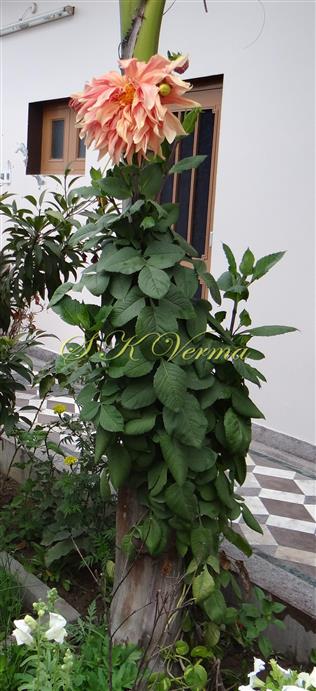
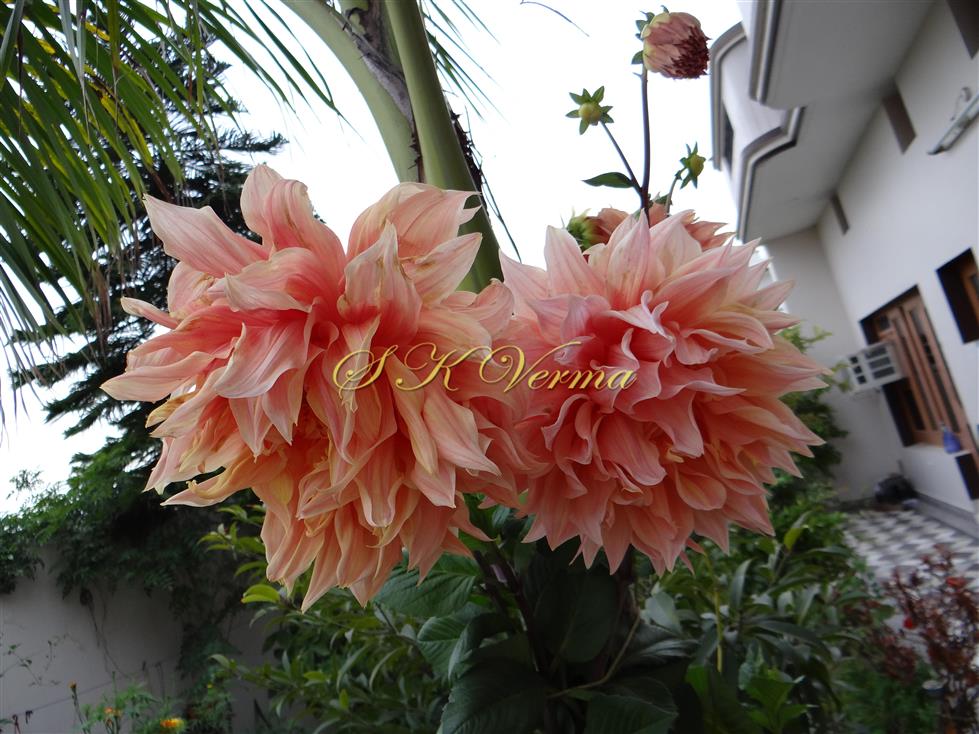

-DSC02772A.jpg)
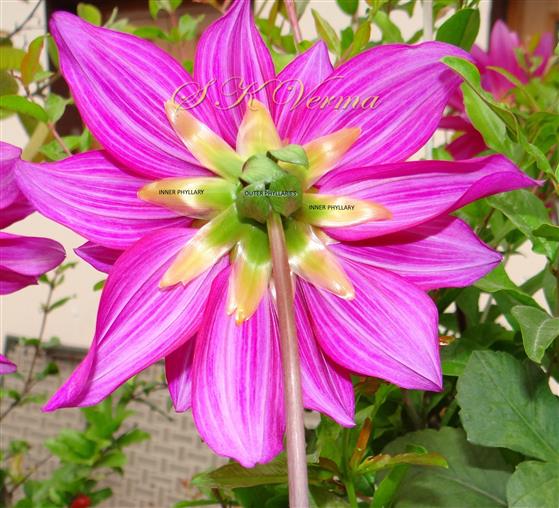

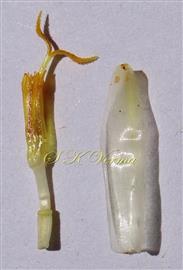
--3662.jpg)
-DSC02730.jpg)
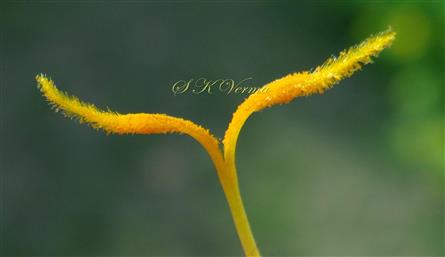
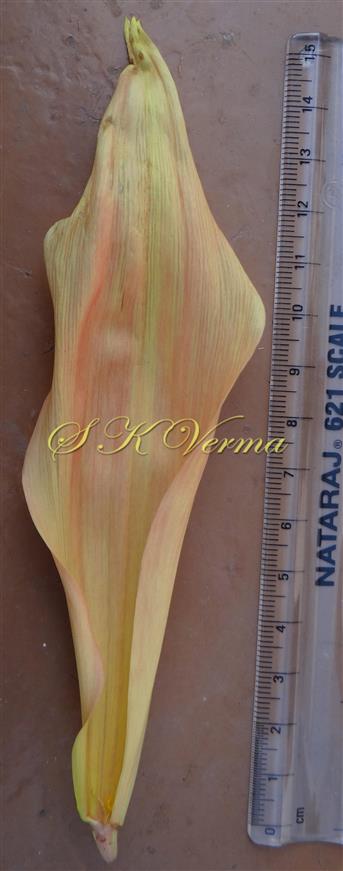
-DSC02751.jpg)
-DSC02752.jpg)
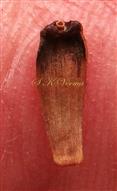



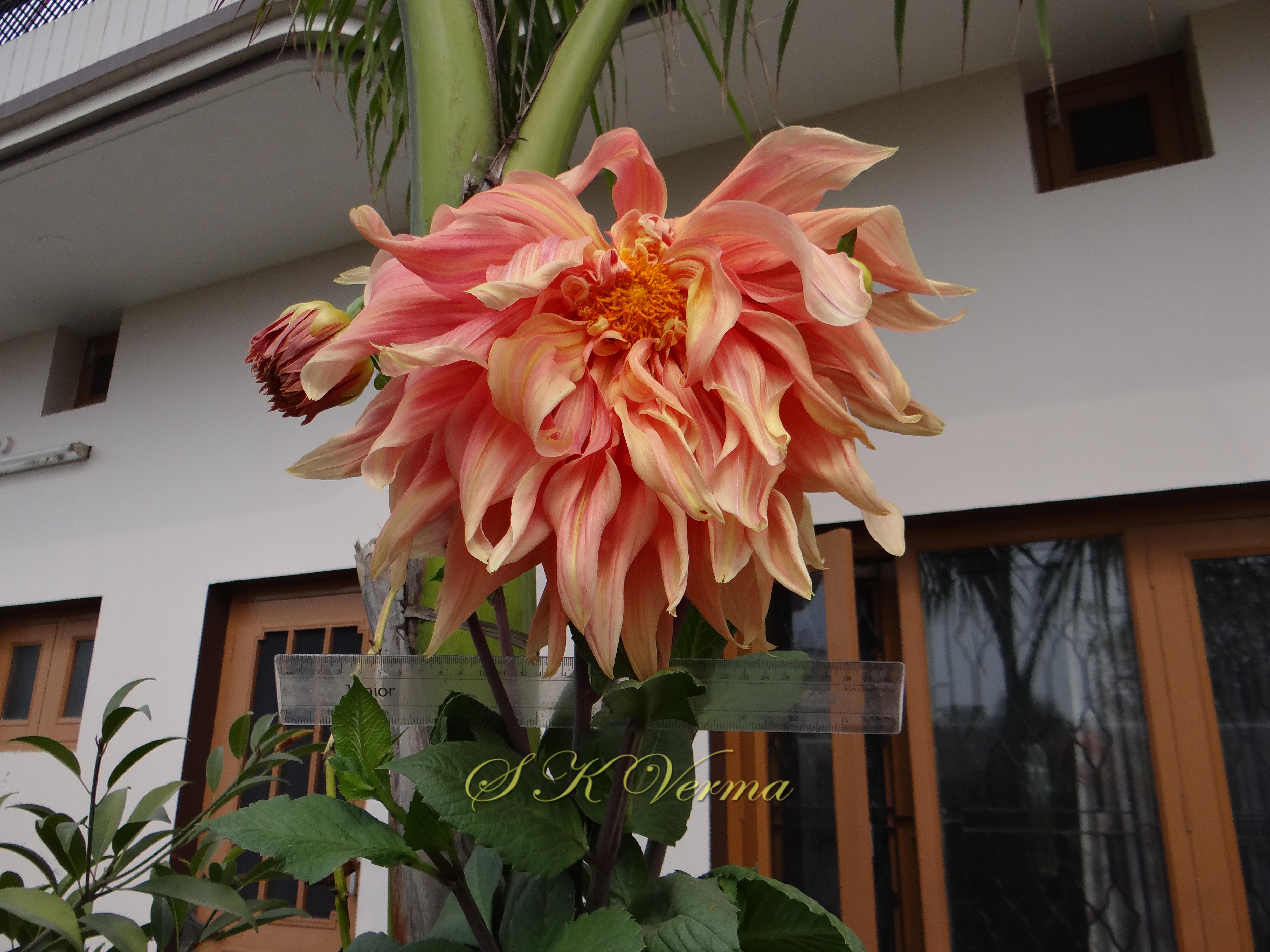
-DSC02772A.jpg)

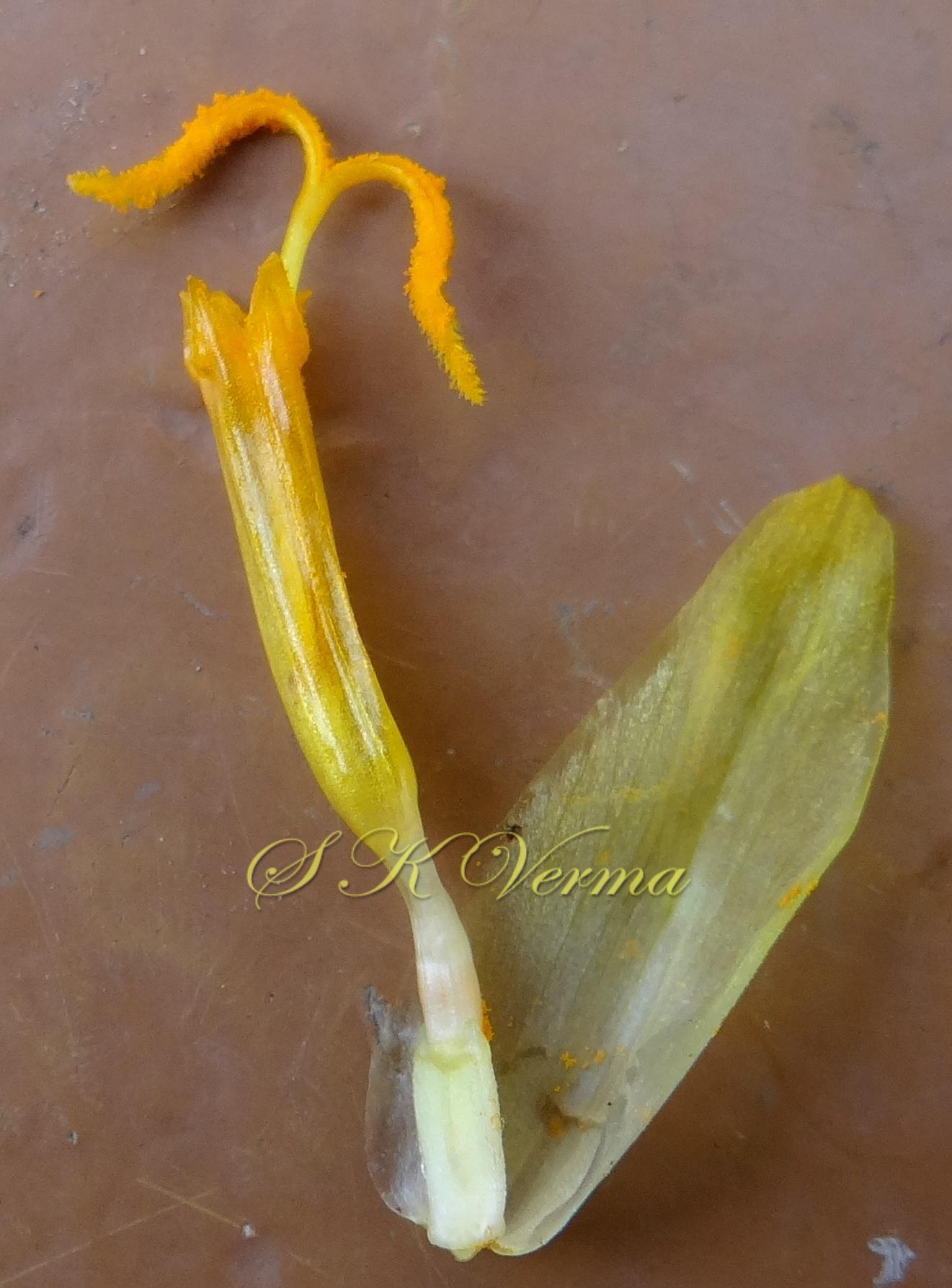

--3662.jpg)
-DSC02730.jpg)


-DSC02751.jpg)
-DSC02752.jpg)
